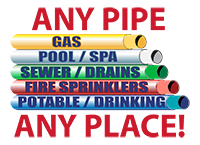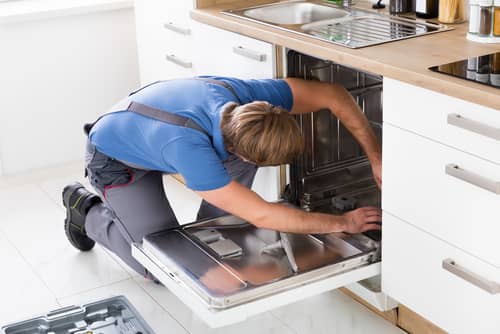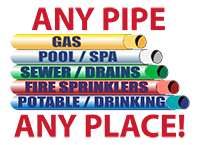Dishwashers take care of a job that most of us do not enjoy. That’s why realizing that your dishwasher won’t drain can be scary.
Unfortunately, a dishwasher not draining is a problem that tends to pop up from time to time. You’ll encounter it at some point if you use that appliance regularly.
The good news is that the issue is typically not indicative of your dishwasher being broken beyond repair. You can try out a few fixes that can get it back in working order.
In this article, we’ll talk about the different explanations for why your dishwasher won’t drain. We’ll also discuss the corresponding fixes you can try.
Avoid getting stuck with a dirty dishwasher by checking out the tips in this article.
The Possible Causes and Possible Fixes for a Dishwasher That Won’t Drain
There are different possible reasons why your dishwasher is currently not draining as it should. To make things easier to follow, we’ll highlight one potential cause and then mention the possible fix for it.
Let’s now get to the bottom of why your dishwasher is not draining.
The Problem: The Dishwasher Is Clogged with Food Particles and Other Debris
Probably the simplest explanation for why the water isn’t draining from your dishwasher is because the appliance is clogged. Food particles that fell into the dishwasher may have been too big to pass through. Because of that, they’ve gotten lodged into the different parts of the dishwasher and are now causing blockages.
It’s not only small food particles that you need to worry about either.
Small pieces of paper, plastic, and other materials that you may accidentally dump into the dishwasher can be problematic as well. With so much debris present inside the dishwasher, you cannot be surprised that it’s struggling.
The Solution
Unclogging your dishwasher is easier than unclogging your sink. However, the task of clearing out your dishwasher can still get messy.
You need to start by getting rid of the gunky water.
Start by positioning some towels or rags underneath the base of the dishwasher. After that, slide the bottom tray out of the appliance. You should now have easy access to all the standing water.
Grab a container and use that to remove the water from the dishwasher. You can also use rags to absorb the remaining moisture if you cannot scoop it out.
With the water removed, you should see the drain basket. Detach it from the dishwasher either by unscrewing it or snapping it off. Look inside the drain basket next and see what it contains.
If the drain basket is clogged as you expected, you must clean it out. Use a small container that can fit inside the drain basket and clean out the debris.
Once the drain basket is clean, replace everything, and try running your dishwasher.
The Problem: The Garbage Disposal or Garbage Disposal Drain Is Clogged
That’s right. A clog in your garbage disposal could also explain why your dishwasher is not draining properly.
To be more specific, if the garbage disposal or the drain is backed up, there’s a good chance that your dishwasher will also be affected.
The Solution
If your focus is on clearing out the dishwasher, then this problem is easy to remedy. The solution is as simple as running your dishwasher a second time. Try it, and you’ll likely see the water recede if the problem is indeed related to your garbage disposal.
Now, clearing out your garbage disposal is going to be an ordeal unto itself, but we can save that for another time.
The Problem: The Dishwasher’s Filter Is Dirty
The filter on your dishwasher is often not in your line of sight. You may forget about it because of that.
Failing to keep an eye on the filter can be problematic because it can also get covered in gunk. Once that happens, your dishwasher’s performance will be affected.
The Solution
Begin by locating the filter. Typically, you should find the filter at the back of the dishwasher. If it isn’t there, you can try looking for it near the lower spray arm.
Upon finding the filter, proceed to clean it manually. Clear away the gunk that’s gathered there, and then see if the dishwasher will drain.
The Problem: The Dishwasher’s Air Gap Is Clogged
Problems related to a dishwasher’s air gap are not common because that component is not present on all machines. Your dishwasher likely only has an air gap if it’s connected directly to your sink and no garbage disposal is involved.
The air gap resembles a small cylinder, and you can usually find it close to your sink’s faucet. The air gap has an important job because it prevents airlocks from occurring inside the connected system.
An air gap that’s caked with debris is not going to work properly. It will cause problems for your dishwasher, so addressing it is a must.
The Solution
You need to remove the air gap first. Do that by twisting it counterclockwise and pulling it out. Inspect the air gap and see if it has debris.
Assuming that the air gap is dirty, you should clean it using some water and a brush. Clean it thoroughly, then run the dishwasher to see if that fixed the problem.
The Problem: The Dishwasher Is Full of Suds
Homeowners who recently installed a new dishwasher may not be aware that there are specific requirements for using that machine. Among them is that you cannot use any detergent you like.
There’s a reason why dishwasher soap is a thing.
According to The Spruce, regular liquid hand soap, detergent, and even liquid dish soap are not supposed to be used inside dishwashers because they produce suds and lots of them. Too many suds will cause clogging inside the dishwasher. On top of that, the suds are also likely to overflow, causing a mess in your kitchen.
The only real upside here is that you’ll know the reason why your dishwasher didn’t drain right away due to the presence of the suds.
The Solution
You will again need to remove the bottom tray of the dishwasher. After removing it, scoop out the soap and the suds in there. Put the bottom tray back in place and run your dishwasher but use the right soap this time to fix the issue.
The Problem: The Dishwasher’s Drain Tube Is Not Properly Aligned
The drain tube connects your dishwasher to the garbage disposal. It’s an essential element of the whole cleaning ecosystem inside your kitchen.
Surprisingly though, the drain tube can be quite prone to having problems. Even something like the presence of a kink along the drain tube can be problematic.
The Solution
A bent drain tube is easy to fix. Find the kink along the drain tube and straighten it out with your hands. The stagnant water should clear out after that.
The Problem: The Dishwasher’s Drain Tube Is Clogged
Another issue that could plague the dishwasher’s drain tube is clogging. Dissolved bits of food and other foreign substances can get lodged in the drain tube after being removed from the dishwasher. If there’s enough debris in the drain tube, it could explain why your dishwasher won’t drain.
The Solution
Addressing a clogged drain tube is going to take more work than straightening it out.
Begin the process of unclogging the drain tube by unplugging the dishwasher. Next, place some rags under the lower front panel of your dishwasher so they can catch any liquids spilling out.
You can now remove the lower front panel of your dishwasher. Look at how it’s installed or refer to the dishwasher manual to see how to remove it. With the front panel removed, you can now access the interior of the drain tube.
Use a small tool to dislodge the clog. This is possible if the blockage is near one of the tube’s openings.
A clog that is closer to the middle of the drain tube will be difficult to remove. You may need to replace the drain tube in that scenario.
The Problem: The Garbage Disposal’s Plastic Plug Has Not Been Removed
This next issue is not specifically about your dishwasher per se. Instead, it involves the garbage disposal connected to it.
You may have forgotten to remove the plastic plug on the garbage disposal’s port. That small plug could be the reason why your dishwasher is not draining completely.
The Solution
Unplug your garbage disposal first and avoid any potential problems there. Now, look for the rubber tube going to the garbage disposal and remove the clamp that’s holding it in place. You should also set the tube aside for now.
Pick up a screwdriver and use that to poke around inside the opening. You should eventually hit the plug. Dislodge the plug by hitting the screwdriver.
Go up to your sink now and reach down into the garbage disposal. Try to feel around for the plastic plug in there. Use a flashlight if that can help you spot the plastic plug.
Put the pieces back together and run your dishwasher. The clog should clear now that the plastic plug is gone.
What You Should Do if the Mentioned Fixes Don’t Work
The fixes mentioned above should work to clear out your dishwasher. However, there are cases wherein they may not work. That’s likely because there’s a more serious issue related to either your dishwasher or the garbage disposal.
Those more serious issues are harder to fix for DIYers. Don’t hesitate to call on the skilled professionals and ask them to fix whatever’s ailing your dishwasher.
How Do You Prevent Incomplete Dishwasher Draining?
The sight of a dishwasher that has not drained completely can be unpleasant. The cleanup that follows is no fun either.
So, how do you prevent this from happening?
Start with putting in a little more effort when cleaning your dishes, and don’t put them all in the dishwasher right away.
Pre-rinse the dishes before setting them inside the dishwasher; doing that every time should prevent bigger chunks of food from causing clogs.
Cleaning the dishwasher more often will also help. As you may have already noticed, many of the issues that can cause incomplete draining are related to components of the dishwasher not being clean enough.
Make it a point to clean the dishwasher regularly and be thorough during those cleaning sessions. By cleaning up regularly, you can prevent a bigger mess from happening.
What Are Other Issues That Can Affect a Dishwasher?
Improper draining is not the only common problem that affects dishwashers. CNet has identified some of the other common issues that dishwashers may encounter.
Examples of those common issues include water pooling on top of the dishes, the dishes on the top rack coming out dirty, and the dishes no longer looking as clean as they used to. Thankfully, those issues are easy to fix.
Loading the dishwasher more carefully should get rid of the water pooling issue as well as the one causing the dishes on the top rack to remain unclean. Meanwhile, clearing out the clogs in the spray arms using a toothpick should allow them to clean better moving forward.
Hopefully, you can resolve any issues that emerge quickly and without incident. As we all know, though, some problems aren’t that easy to fix. They will require more tools and an amount of expertise.
If you have issues related to your plumbing, pipes, and other fixtures in and around your home, please feel free to contact us at San Diego Plumbing & Pipelining for assistance. We’re always ready to serve, so reach out to us whenever the need arises.








